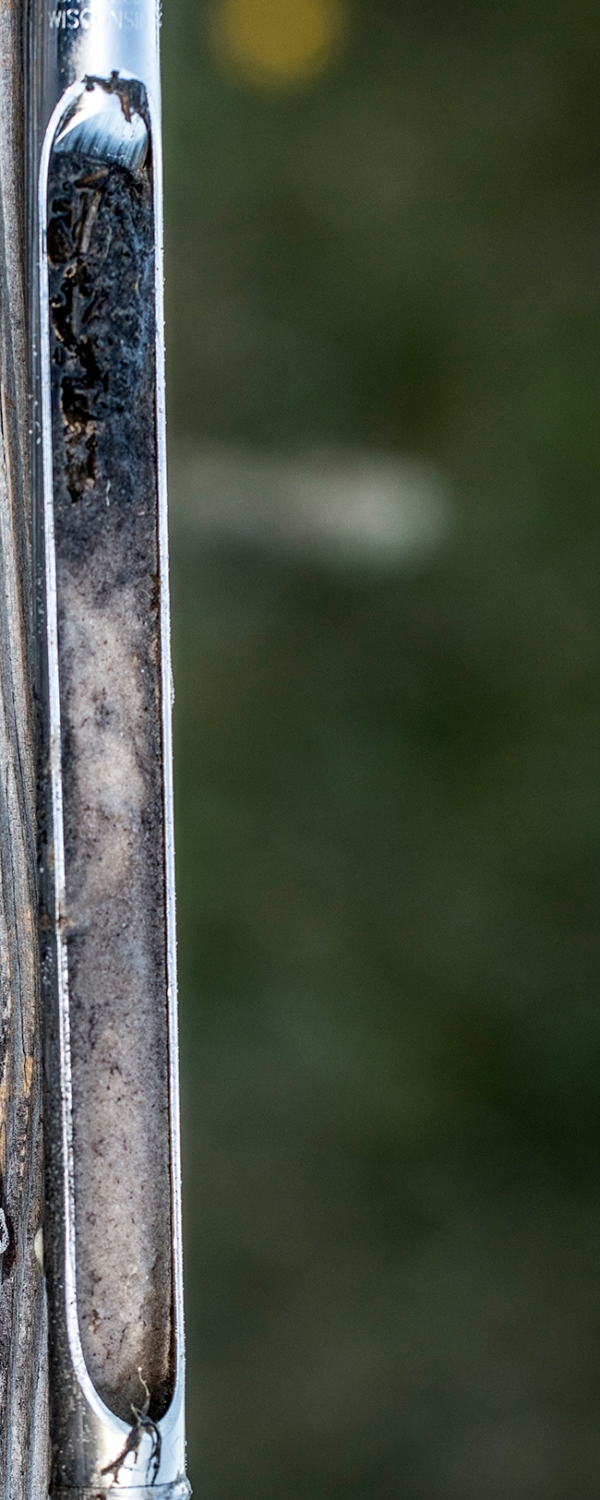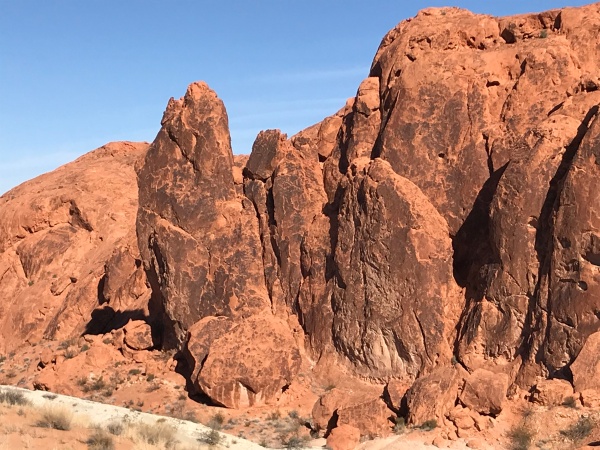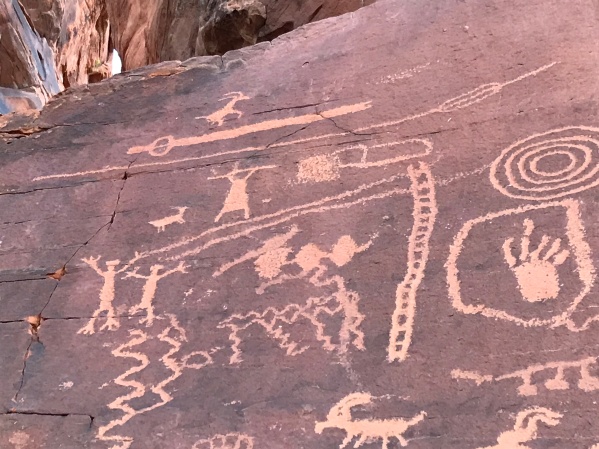Today John and I visited Halpatioke Regional Park near Stuart, Florida, preparing to guide a wetland field trip there in January, maybe. Wetland fieldtrips lead quickly to soil ecology, and that means bacteria.
In the wet prairies and depression marshes near us the hydric (perpetually saturated) soils have a characteristic vertical profile. The top layer is black peaty decaying plant matter, which may vary in thickness from 12 feet historically in the Everglades to an inch around our area. Below the decaying peat, the absence of oxygen due to constant saturation creates a comparatively sterile off-white layer whose whiteness is enhanced as minerals wash down to lower levels. Below the sterile white zone appears a second blackened band of organic acids collecting from the decay up top. Markings may stain the white zone, and those can be interesting…stay tuned a moment.

Hydric soil profile. Dark peaty layer on top. Sterile leached white layer below. Edge of second dark layer at bottom of photo.
Our official Florida State Soil resembles the sort I’m describing, Myacca Fine Sand.
Now back to the markings. To repeat hopefully helpfully, the whiteness is due largely to absence of oxygen, yet penetrating roots may channel a little oxygen down there. Bacteria along those root paths obtain energy by using oxygen to metabolize manganese (and iron), much as I use oxygen to metabolize a raspberry danish. You might say the bacteria harness the natural process of “rusting.” The oxidized manganese shows up as black root tracks in the otherwise off-white soil layer. Manganese and iron can oxidize without bacterial assistance, of course, but the association of manganese-oxidizing bacteria with wet-soil root tracks is well established. The bacteria concentrate the oxidized metals. In fact, there are cases where the wetland bacteria tie up enough manganese and iron to cause the plants nutrient deficiencies.

Root track penetrating the white layer.
In some areas “iron bacteria” in well water cause their own markings…orange stains on surfaces exposed to iron-rich groundwater. Again, bacteria are obtaining energy by oxidizing iron, accumulating the reddish iron oxide within the bacterial colonies. Immediately behind my home is a municipal pump that discharges groundwater intermittently into a small canal where it mixes with other water. The pumping apparatus has reddish iron bacteria stains. Look at the red stain on an otherwise white pipe in the photo below. The stained zone houses “iron bacteria” of the genus Gallionella with characteristic expanded heads on kinky, branched stalks. They are very very very small, yet visible in the photo below.

Pipe stained by iron oxidizing bacteria. The white line in the stain area is the site scraped for the next photo.

The Gallionella stalked bacteria from the orange stain on the pipe. (I believe…although I am not an expert on bacteriology!)
Last week my wife Donna and I were in Nevada exploring the desert and mountains (and losing a couple bucks in Las Vegas). Manganese bacteria stained there too. Desert rock surfaces sometimes have a gloss the same color as those dark tracks in the Florida hydric soils. The “desert varnish” is likewise the work of manganese-oxidizing bacteria, mixed with other microbes. The varnish builds so slowly that petroglyphs in it by pre-European artists remain vivid still, thousands of years later.

Rock varnish in Nevada.

Petroglyphs in Nevada rock varnish, probably over 2000 years old, although the age is not precisely established.
Funny how the same natural phenomena surface all over the place once you’re looking. Root tracks in waterlogged soils, red stains around wellwater plumbing, and ancient petroglyphs all the handiwork of iron- and manganese-metabolizing bacteria.
Uncle Tree
December 22, 2017 at 7:53 pm
Interesting and noteworthy and always, George! 🙂 A very Merry Christmas to you and yours! UT
George Rogers
December 22, 2017 at 8:50 pm
Thanks UT. Merry Christmas to you too. Think I’ll take a peek at what you’ve been up to recently…
Linda Grashoff
December 23, 2017 at 12:11 pm
You know I love this post, George! So glad to know that you will share this information, not only with your blog followers, but also with your students. Long live the iron bacteria! I had never heard of rock varnish and the role it plays in the petroglyphs. Fascinating post.
George Rogers
December 23, 2017 at 12:25 pm
Thanks Linda! You will see it blamed squarely on you, truthfully, in a comment on your ever-fascinating and inspiring blog.
theshrubqueen
December 23, 2017 at 3:16 pm
How interesting! I spend a lot of time in the ‘soil’ and see the marking frequently been wondering about that – a great Christmas present,knowledge! Thank you, George and Merry Christmas.